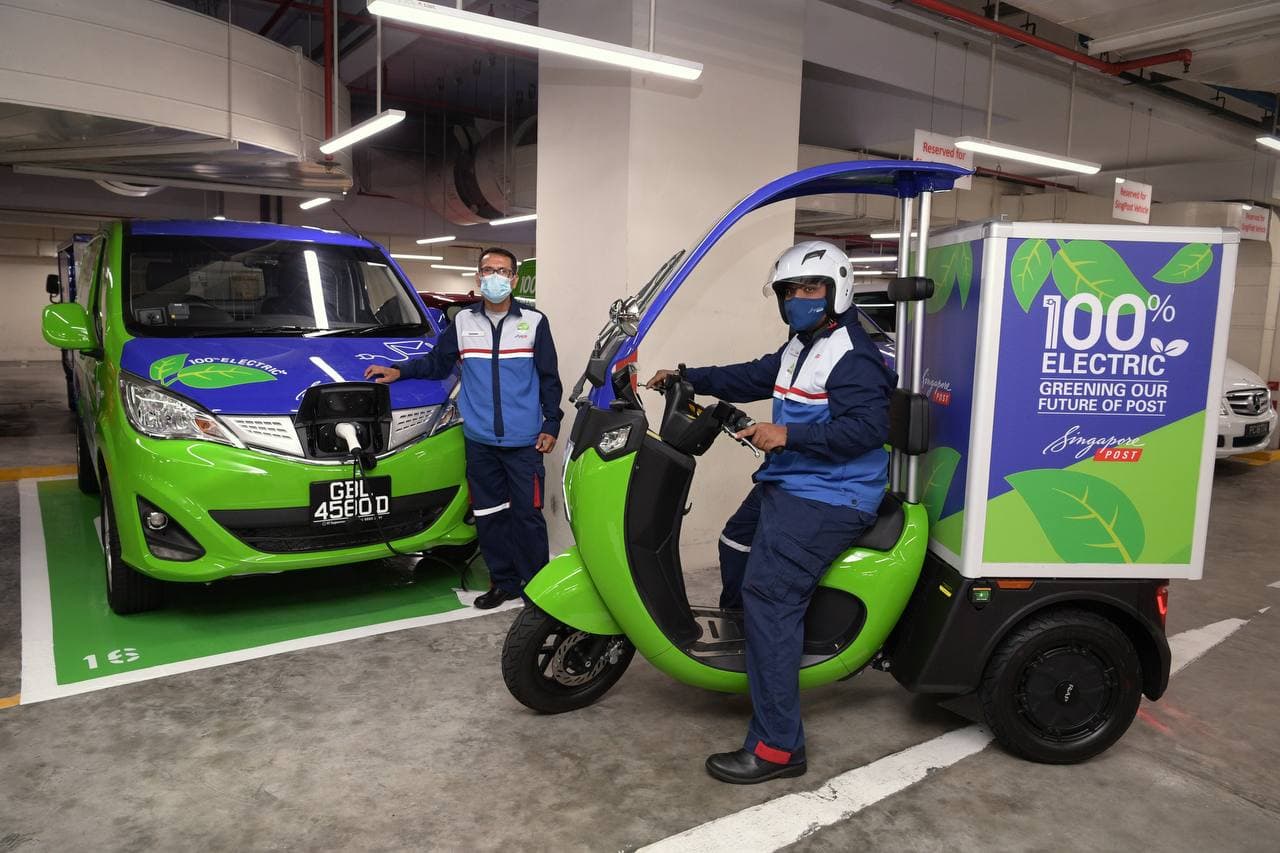SingPost pilots electric scooters and vans, with aim to replace current light vehicles by 2026
Sign up now: Get ST's newsletters delivered to your inbox

Singapore Post's target is to reduce absolute greenhouse gas emissions by 35 per cent by 2030.
ST PHOTO: NG SOR LUAN
Follow topic:
SINGAPORE - The postman will soon be bringing your mail on electric vehicles.
Singapore Post announced on Monday (Aug 16) that it will replace all of its lighter vehicles with electric ones by 2026. For a start, it has begun pilots of two electric scooters and two vans.
The Iona RAP three-wheeler scooter is being considered in the pilot to replace the company's 700 motorcycles and scooters that run on internal combustion engines.
The BYD T3 electric vans, if successful, are also expected to gradually phase out SingPost's 140 petrol vans as their certificates of entitlement expire in the next five years.
SingPost's target is to reduce absolute greenhouse gas emissions by 35 per cent by 2030.
The pilots should end sometime in the next few months and could be further expanded, if criteria like safety are met.
"As Singapore's leading last-mile and postal service provider, our delivery vehicles traverse the length and breadth of the nation every day," said Mr Vincent Phang, chief executive of SingPost Singapore and its postal services.
"There is a tremendous potential for us to do better for the planet."
The two Iona RAP scooters will be piloted on the Anson-Road-Shenton Way and Emerald Hill-Cairnhill routes, and will appear in a distinctive green livery, SingPost said.
They have been found to emit roughly 75 per cent less greenhouse gases compared with their internal combustion engine counterparts. Each charge gives a range of 120km, far in excess of the 15-20km average that postmen travel each day.
Their 500-litre cargo space also compares favourably with the 462-litre cargo volume of SingPost's current three-wheeler scooters and the 164 litres of its motorcycles.
SingPost has also ensured the scooter's stability and that the electric motor is adapted to the frequent starts and stops required in delivery work.
The Land Transport Authority has approved the vehicle as a potential alternative.
The BYD T3 electric van emits about 50 per cent less greenhouse gases than petrol-fuelled vans and has a range of 300km on a full charge, with a maximum cargo volume of 3,800 litres.
SingPost said it is also in talks with various distributors to replace its heavy vehicle fleet with electric trucks, making it the first postal service in the Asia-Pacific region to commit to a 100 per cent electric delivery fleet.

ST PHOTO: NG SOR LUAN
Minister of State for Communications and Information and National Development Tan Kiat How said the pilots are an example of SingPost's commitment to meeting the evolving postal needs of people and businesses.
He said that with the shift towards e-commerce, there will be a surge in parcel volumes, adding: "This shows SingPost's commitment to environmental sustainability."
SingPost said it will continue to ensure that fuel consumption and emissions decrease, through, for example, using innovative ways to optimise fleet routes and encouraging fuel-saving driving habits.

ST PHOTO: NG SOR LUAN
Other big local companies that have committed to fully electrifying their fleet include Wildlife Reserves Singapore.
The park operator is in the process of converting all its trams at the Singapore Zoo, River Safari, Night Safari and Jurong Bird Park to run on electricity by the end of this year.
Its entire internal fleet, consisting of vans, lorries, buggies and tow tractors, should turn electric by 2025.
Transport operator SMRT is set to change all its taxis to electric ones within five years.
Electric vehicles are seen as the future as they are more environmentally friendly, but experts have warned that focus should also be put on how the electricity used to charge the vehicles is produced.
For that, more sustainable energy sources like the greater harnessing of wind and solar energy might be needed.

